
About UsThe Numismatic Bibliomania Society is a non-profit organization promoting numismatic literature. For more information please see our web site at coinbooks.org SubscriptionsThose wishing to become new E-Sylum subscribers (or wishing to Unsubscribe) can go to the following web page link MembershipThere is a membership application available on the web site Membership Application To join, print the application and return it with your check to the address printed on the application. Membership is only $15 to addresses in the U.S., $20 for First Class mail, and $25 elsewhere. For those without web access, write to: David M. Sundman, Secretary/TreasurerNumismatic Bibliomania
Society AsylumFor Asylum mailing address changes and other membership questions, contact David at this email address: dsundman@LittletonCoin.com SubmissionsTo submit items for publication in The E-Sylum, just Reply to this message, or write to the Editor at this address: whomren@coinlibrary.com
BUY THE BOOK BEFORE THE COINYou won't regret it! |
- WAYNE'S WORDS: THE E-SYLUM JANUARY 22, 2012
- THE ASYLUM VOLUME 29, NO. 3 PUBLISHED
- CGB AUCTION 52 NUMISMATIC LITERATURE LOTS
- NEW BOOK: ROSA AMERICANA COINAGE OF WILLIAM WOOD
- NEW BOOK: THE AUTHORITATIVE REFERENCE ON FRANKLIN HALF DOLLARS
- NEW BOOK: HOLEY DOLLARS OF PRINCE EDWARD ISLAND
- HOBBY CORNER: INDIA'S NUMISMATIC BOOKSHOP
- WHITE HOUSE PETITION TO REFORM COINAGE SYSTEM
- BRITISH MUSEUM MONEY GALLERY BEING REBUILT
- JEFF REICHENBERGER ON PRINTING TECHNOLOGY
- VOCABULARY WORD: QUOIN
- NOTES FROM E-SYLUM READERS: JANUARY 22, 2012
- THOUGHTS ON THE ANA MUSEUM THEFT
- ROYAL MINT ON THE 1841 MAUNDY THREEPENCE
- NUMISMATIC ARTICLES IN THE JOURNAL OF MODERN HISTORY
- GOZO KAWAMURA, COW MEDALLIST
- SOME STACKS-BOWERS JANUARY 2012 AMERICANA SALE LOTS
- ON CIRCULATING 'GOLD' COINS
- ARTIST GARY TAXALI DESIGNS COINS FOR ROYAL CANADIAN MINT
- ANOTHER POSSIBLE ROMAN BROTHEL TOKEN IDENTIFIED
- CASE AGAINST ROBERT HECHT ENDS IN ITALY
- COULD FACEBOOK CREDITS EVOLVE INTO A TRUE CURRENCY?
- FEATURED WEB PAGE: METACOIN
WAYNE'S WORDS: THE E-SYLUM JANUARY 22, 2012

New subscribers this week include Steve Caruso, Thomas F Clarke, Tom Wood, Jeff Bercovi, Norma J Puddester, Ron Zitterkopf, and Kent D Johnson. Welcome aboard! We have 1,502 email subscribers, plus 170 followers on Facebook.
To follow up from last week, Eric Schena came home from the hospital on Monday and has recovered pretty well. He's heading back to work tomorrow.
This week we open with a note about the latest issue of our print journal, and a numismatic literature auction note followed by announcements of three new numismatic books and a story about a numismatic bookstore in India.
Other topics this week include a White House petition on coinage reform, the British Museum numismatic gallery, the 1841 Maundy coinage, and another Roman brothel token.
To learn more about printing technology, quoins, Cow medallist Gozo Kawamura, and coin deliveries to Berbice, Essequibo & Demerara, read on. Have a great week, everyone!
Wayne Homren
(whomren@gmail.com)
Numismatic Bibliomania Society
THE ASYLUM VOLUME 29, NO. 3 PUBLISHED
David writes:
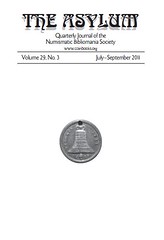 I've sent another issue of The Asylum to the printers. Here are the
contents:
I've sent another issue of The Asylum to the printers. Here are the
contents:
- Thomas D. Harrison - The Tale of a Resurrected Soley Medalet
- Myron Xenos - "You Don't Say": Numismatic Quarterly Quiz
- William Malkmus - I Wish I'd Said That!
- NBS Annual Meeting at the ANA 2011 Annual Convention
- NBS Symposium at the 2011 Chicago ANA Convention
- Book Review: King of Eagles, by Dean Albanese
CGB AUCTION 52 NUMISMATIC LITERATURE LOTS
Howard A. Daniel III writes:
I just received CGB's Monnaies Vente Sur Offres 52 catalog this week from Paris. On pages 472 to 476 are some rare numismatic references that might be of interest to E-Sylum readers. The catalog pages can be viewed at www.cgb.fr/flip/v52/pageflip.html .

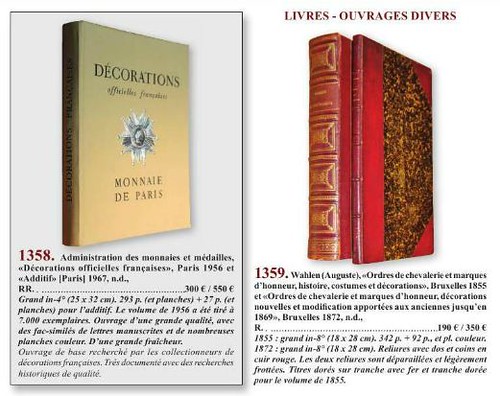
NEW BOOK: ROSA AMERICANA COINAGE OF WILLIAM WOOD
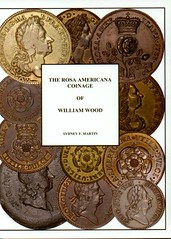 William Wood conceived a plan to manufacture coins for Britain's American Plantations, which were constantly in need of small change to support everyday commercial trans-actions. This plan became entangled in the politics and economic theories of the day, with King George, his mistress, Isaac Newton, Robert Walpole, and other English notables, as well as the colonial merchants, playing key roles in the story behind the production and distribution of the coins.
William Wood conceived a plan to manufacture coins for Britain's American Plantations, which were constantly in need of small change to support everyday commercial trans-actions. This plan became entangled in the politics and economic theories of the day, with King George, his mistress, Isaac Newton, Robert Walpole, and other English notables, as well as the colonial merchants, playing key roles in the story behind the production and distribution of the coins.
Drawing upon his original research the author examines the historical context in which the coins were produced, integrating often conflicting, existing material. Particular attention is paid to the methods employed in manufacturing these coins, from the underlying metallurgy, to the process of preparing and striking the planchets, the locations where they were made and their circulation patterns.
A catalogue of known die varieties is developed for each of the three de-nominations issued. Some 21 varieties of halfpence, 66 varieties of pence, and 36 varieties of twopence are identified. As well as describing the coins themselves, he has explored related experimental and pattern issues, providing new insights into these enigmatic issues. Production quantities are estimated, rarity and condition census data developed, and major holdings examined.
Michael Hodder, in his Introduction states "The best advice anyone can take before undertaking a difficult research project is condensed in this quotation from Marcus Portius Cato Censorius (234-149 B.C.): 'Master the subject, the words will follow.' Syd Martin's new book on William Wood's Rosa Americana issues is a good example of the continuing aptness of the saying."
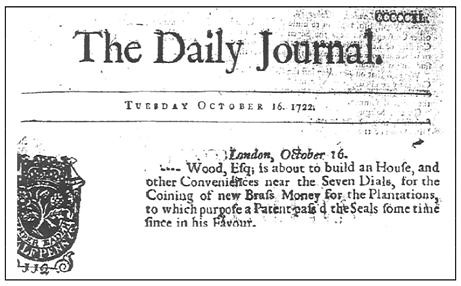
The book, which is enjoying early favorable reviews, can be obtained from Charles Davis, Numismatic Literature, P.O. Box 547, Wenham, MA 01984; Tel: 978-468-2933; Fax: (978) 468 7893; email: numislit@aol.com
NEW BOOK: THE AUTHORITATIVE REFERENCE ON FRANKLIN HALF DOLLARS
 The Authoritative Reference on Franklin Half Dollars by Kevin Flynn will soon be available. The book is 8 ½ by 11, 184 pages, and tons of photographs. Prepublication price will be available until the book is printed. Book should be going to the printers in 2 weeks, then should take 5 weeks to print.
The Authoritative Reference on Franklin Half Dollars by Kevin Flynn will soon be available. The book is 8 ½ by 11, 184 pages, and tons of photographs. Prepublication price will be available until the book is printed. Book should be going to the printers in 2 weeks, then should take 5 weeks to print.
This is Flynn's 40th book on numismatics. One of the benefits of writing books is the knowledge gained through research. Reading Franklin's 800 page autobiography gave incredible insight as to his contributions in developing our country's social and moral values and preparing the colonies in becoming a nation. No other individual is more responsible for our independence. It's no wonder Mint Director Nellie Tayloe Ross wanted to pay tribute to Franklin with his image on a coin. As the coins remember those who are important to us, Flynn included extensive information on Franklin's life and contributions.
The primary purpose of this book was to create a complete and comprehensive reference for the Franklin Half Dollar series including all major die varieties, history, hub changes, collecting, historical documents, and hot topics.
The die variety section of the book includes 38 doubled dies and 30 repunched mint marks. This includes several new die varieties which have not been listed before. For each die variety listed, detailed macro photos make identification much easier. Most of the varieties include multiple photographs showing different details. Included also for each variety is a detailed description of the variety, diagnostics, including die markers such as die cracks, scratches, clashes which can make identifying the variety easier, pricing, and cross references.
Many new archive letters were uncovered relative to the Franklin Half Dollar series and are included. This greatly helped in the analysis of the history section and shed new details on the series. For each hub change, enlarged photos show the before and after of the design changes with a detailed description of the differences. Also included are sections on Collecting, Grading, Certified, and Proof Franklin Half Dollars. A detailed analysis is presented on Full Bell Lines as this is critical in collecting Franklins. This book also contains sections written by Brett Parrish, Greg Lewis, and Douglas McIndoe.
The date-by-date section offers an analysis of each date including scarcity, striking characteristics, world history which occurred that year, hot topics, comments, current values, prices realized from Heritage Auctions, and the certified population counts from PCGS and NGC.
The Hot Topics section contains a several detailed studies on the Franklin Half Dollar series including refuting the 1950D/S, the alleged 1964 Franklin Half Dollar, the 1959 Type 2 over Type 1, and the Bugs Bunny die varieties..
Only 50 hardcovers are being printed. Retail for the softcover is $34.95, hardcover $100. Prepublication price available until the book is printed is $30 for the softcover, $85 for the hardcover. Include $5 for media rate or $10 for first class postage.
To order, send a check or money order to Kevin Flynn P.O. Box 396, Lumberton, NJ 08048. Please send any questions to Kevin Flynn at kevinj50@comcast.net .
NEW BOOK: HOLEY DOLLARS OF PRINCE EDWARD ISLAND
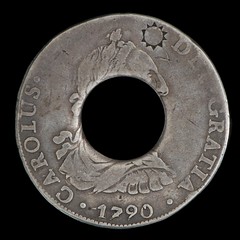
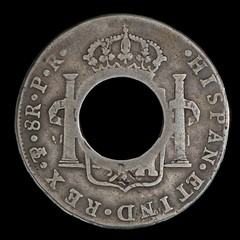
I've been following the thread on the recent acquisition of a New South Wales Holey Dollar by the National Museum of Australia. I was especially interested in the calculation of the percentages of extant specimens from various Spanish and Spanish colonial mints. In an act of shameless self-promotion for my forthcoming book on the Holey Dollars of Prince Edward Island (Spink, 2012), I can give you similar percentages for mints that produced the hosts for the PEI 5 shilling coins. Unlike the case with New South Wales, however, all surviving examples of the Prince Edward Island Holey Dollar may be contemporary counterfeits. There is simply no way of telling the difference between a Government issue Holey Dollar and what are referred to as merchant counterfeits.
In any event, of the 79 PEI Holey Dollars I have been able to track down - many fewer than the numbers for New South Wales - the percentage of the total for each of the mints is surprisingly close to the figures for NSW:
Durango - 1 coin - 1.26 %
Lima -- 11 coins - 13.92 %
London - 1 coin -- 1.26 %
Madrid -- 1 coin - 1.26 %
Mexico - 57 coins - 72.15 %
Potosí -- 3 coins -- 3.79 %
Santiago - 2 coins - 2.53%
Unknown - 3 coins - 3.79%
By comparison, the web site's calculations showed 10.87% of the NSW hosts were provided by Lima dollars and 76.81% by Mexican. Your percentage for Potosí was a somewhat higher at 9.42%, but all the rest were in the same ballpark as those for PEI.
To read the earlier E-Sylum article, see: ANA MUSEUM LOOTED OF $1 MILLION IN RARE COINS (www.coinbooks.org/esylum_v15n03a05.html)
HOBBY CORNER: INDIA'S NUMISMATIC BOOKSHOP
Ed writes:
Alokparna Das has written an article about a numismatic bookstore called "Hobby Corner". The store does have some coins ("commemorative coin sets of Independent India") but seems to be a book store rather than merely a coin shop with a few books.
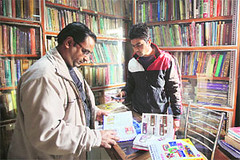 Across the fountain on the main road of Chandni Chowk, a narrow stone staircase leads one to an old and tiny shop on the first floor of the building, adjacent to the Bhai Mati Das Sati Das Sikh Museum. The shop, simply named Hobby Corner, is meant for those who treat collecting coins as more than a hobby. For, there are thousands of books on numismatics and related areas stacked inside the small shop, making it perhaps the only bookstore of its kind in the city.
Across the fountain on the main road of Chandni Chowk, a narrow stone staircase leads one to an old and tiny shop on the first floor of the building, adjacent to the Bhai Mati Das Sati Das Sikh Museum. The shop, simply named Hobby Corner, is meant for those who treat collecting coins as more than a hobby. For, there are thousands of books on numismatics and related areas stacked inside the small shop, making it perhaps the only bookstore of its kind in the city.
From the nine-volume Indo-Greek and Indo-Scythian Coins by Michael Mitchiner (priced around Rs 21,000) to the first edition of Catalogue of the Gupta Gold Coins in the Bayana Hoard by A S Altekar, which doesn't have a price label, to Medals of British India by Robert P Puddester and latest publications on the subject - the store has nearly 500 titles on coins available at any time. There are also old editions of journals on the subject, books on history, philately, numismatics stationery, and commemorative coin sets of Independent India on sale.
The young owner, Aditya Jain, says that it all started more than 25 years ago, with his father Rajesh Jain's keen interest in numismatics. Rajesh Jain, one of the founder members of the Delhi Coin Society and a life member of Numismatics Society of India, has been a regular in various exhibitions in the city, displaying his large collection, that includes error coins.
As Aditya took over from his father, he thought of launching the store on the Internet. "There's hardly any publisher of numismatics books who hasn't given us a distributorship. Thanks to the Internet we have been able to expand our client base and get at least 50 queries per day -many of these from foreigners and numismatics societies across the world," he says, while showing his name as the distributor on several books published across the country. Aditya adds that the store specialises on publications on Indian coins - from the ancient to the contemporary.
"In the future, we plan to add reprints and original rare books to our list," he says. The store's website also offers services such as valuation of antique coins to individual collectors and amateurs.
Collectors from all over India drop in looking for the latest research work published in the field, claims the owner. The setting seems just right for anyone interested in antique coins, as one flips through books on the subject sitting next to a window that gives a bird's eye view of the old city
To read the complete article, see: Coin Corner (www.indianexpress.com/news/coin-corner/902549/0)
THE BOOK BAZARRE
WHITE HOUSE PETITION TO REFORM COINAGE SYSTEM

Created on September 22, 2011, it reads:
WE PETITION THE OBAMA ADMINISTRATION TO:
Reform the coinage system.
We believe that it would be in our economy's best interest to form a new coinage standard. This standard would consist of three coins. a ten-cent coin, a fifty-cent coin, and a one dollar coin. This standard would open up new efficiencies in both everyday economic life, and in government spending.
According to the US Mint, in 2010 a single one-cent coin cost 1.79 cents to produce and distribute. Minting 3,487 million pennies in 2010 cost the US taxpayer $27.5 million in order to subsidize the existence of the penny.
There is a similar situation with nickels. A single five-cent coin cost 9.16 cents to produce and distribute in 2010.
We waste valuable time handling coins that aren't worth much. Getting rid of these coins could save us up to $1 billion annually in lost opportunity costs.
Treasurer of the United States Rosie Rios responds:
Thank you for your interest in the United States' coinage system. The Administration is committed to evaluating the best ways to meet public demand for coins in a cost-effective manner. Indeed, Vice President Biden and Treasury Secretary Geithner recently announced that the United States Mint is suspending the production of Presidential $1 Coins for circulation in light of the Federal Reserve Banks' inventories of 1.4 billion $1 coins. This measure will reduce costs by at least $50 million annually.
As you note, the total production costs of both the penny and the nickel currently exceed their respective face values. The Obama Administration, along with Congress and other stakeholders, continues to review this issue and the best way to address it.
One potential way to reduce the cost of the penny and nickel--as well as the cost of the other coin denominations--is by changing the composition of those coins to more cost-effective materials. The compositions of the current half-dollar, quarter-dollar, dime, five-cent and one-cent coins are set by law in the Coinage Act of 1965 (as well as other laws passed by Congress). Since that time, the material costs of those coins have increased substantially, while the face value of each denomination has remained constant.
To help address this issue, in 2010, the President signed into law the Coin Modernization, Oversight, and Continuity Act. This law provides the Secretary of the Treasury with the authority to conduct research and development for alternative metallic coinage materials and requires the Secretary of the Treasury to make recommendations to Congress on potential new alloys. Since the law's enactment, the United States Mint has been actively engaged in research and development work to find more economical metallic materials for our coinage.
The President also proposed legislation that would provide the Secretary of the Treasury the authority to prescribe the weights and compositions of all circulating coins. If enacted, this legislation would enable the United States Mint to manufacture the Nation's coins at significantly lower costs.
Moving forward, the Administration will continue to work to ensure that United States coinage is produced and circulated as efficiently and effectively as possible. We appreciate your proposal and your interest in this issue.
Kavan adds:
I am fascinated by her phrase "while the face value of each denomination has remained constant," since in reality the value of each denomination is going down by inflation and the denomination is the face value.
To read or sign the petition, see:
Reform the coinage system.
(wwws.whitehouse.gov/petitions#!/petition/
reform-coinage-system/Q0rspKM7)
BRITISH MUSEUM MONEY GALLERY BEING REBUILT
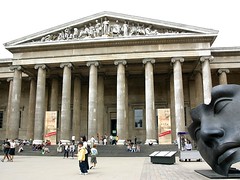 The Money gallery at the British Museum opened 14 years ago, and was at the time an innovative way of displaying coins and medals. It represented a new way of thinking about the history of money, and changed how museums around the world told this global story.
The Money gallery at the British Museum opened 14 years ago, and was at the time an innovative way of displaying coins and medals. It represented a new way of thinking about the history of money, and changed how museums around the world told this global story.
Now, a new partnership between Citi and the British Museum means we are able to redisplay the gallery, make changes to the design and content of the displays, and take advantage of new knowledge and new ideas in museology and monetary history.
We will be building on the results of an evaluation of the current Money gallery that has been done over the past few years. This gives us some clear pointers for how it can be clarified and updated, and we have already started a program of consultation with key audiences to find out what they would like to see the new gallery containing, and what questions they have about money and its history.
The gallery will close to the public until June 2012 while the refurbishment takes place. An online blog documenting this can be found at http://blog.britishmuseum.org/category/collection/money-gallery/
To read the complete article, see: Money gallery at British Museum being rebuilt (www.coinsweekly.com/en/News/4?&id=974)
JEFF REICHENBERGER ON PRINTING TECHNOLOGY
Just a few comments about the type case used in the Thames and Field article and thanks to Dick Johnson for his reminisce.
Dick observed that the Thames and Field case is upside down, which is true. Also, perhaps it is an older case, but the type cases I am familiar with (in fact, I still use them regularly) are longer by 1/3. The missing section would hold the capital letters. As you can see, larger compartments do hold the letters used most often.
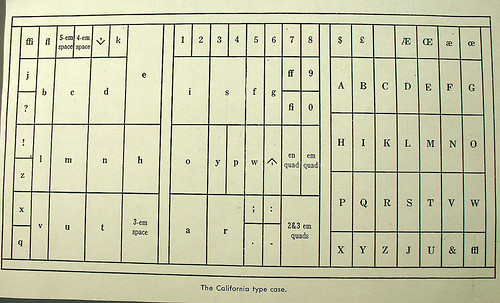
Below is one of the cases I currently use.

I have letterpress equipment and two type cases (two fonts) that I use for a certain recurring job and various obscure jobs in my print shop. In addition, I use the Platen Press for perforating, scoring, and die cutting applications. For printing - back in the day - the idea was for the printer to 'kiss' the paper with the inked type just enough to make a clear and crisp impression without making a 'bite' in the paper - that is, too hard of an impression so the back of the sheet looks embossed. This was particularly important in book printing where printed pages back each other up.
Ironically, in recent times, I have printed invitations where the customer was insistent that there be a 'bite' in the paper to add 'old fashioned authenticity' to her project! (There was no reason for me to explain that the age of the machine, worn gears, bushings, cams, and joints made it impossible for anything but a substantial 'bite'.) Living in the stone-age has its advantages! Below is a photo of the Chandler and Price 15" platen press in my shop. Likely built around 1910.
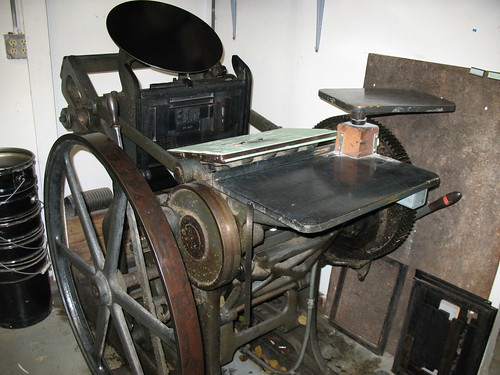
This photo shows some printers tools. The steel frame is called a 'chase'. The type is locked into the chase using wood and steel blocks known as 'furniture'. You can see the type locked in with a 'cut' of a cross. A cut is simply an engraved device cut into a larger piece of lead or wood, which is type height and will print along with the type copy. The items at the bottom are -left to right- a composing stick. This is where you compose your words (upside down of course). The T-handle wrench is what you use to tighten everything into the chase. Finally, the device at the bottom right -two steel wedges with teeth- what the T-handle forces apart to tighten the whole thing - and what is my only real link to justify this rambling in a numismatic e-magazine - is known as...drum roll please...a QUOIN!!

I am in complete agreement with Dick's assessment:
"Anyone who has set type by hand, locked it in a frame, put the frame in a press, and printed a first impression will know the thrill of seeing your handwork in print. It set me up for a lifetime as a lover of the printed word and related fields of writing and book collecting."
For me, a bibliophilic tendency is a natural extension of my profession. Printing has become rather fast-paced and techno-heavy these days. I often feel like not much more than a copy jockey, which is why I really enjoy running the letterpress from time to time. It regenerates me and makes me feel like a real printer!
Dick Johnson adds:
What a delight to view these photos. It brings back a rush of fond memories. I look back on those few years I was a printer as some of my happiest! Jeff's Chandler & Price press looks exactly like the two I had, but mine were made in 1880 and 1910.
I didn't save many of the things I printed, but I do have some of the membership cards. Here are two cards of the Heart of America Numismatic Association. I didn't abbreviate "Association" properly in 1950, but corrected it in 1951. Members found that hilarious.
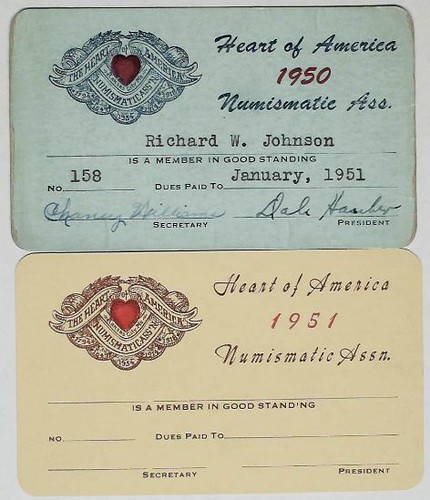
To read the earlier E-Sylum article, see: DICK JOHNSON REMINISCES: TYPE DRAWERS AND PRINTING (www.coinbooks.org/esylum_v15n03a07.html)
VOCABULARY WORD: QUOIN
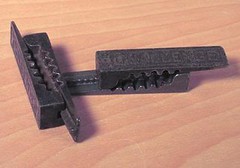 I enjoyed reading DICK JOHNSON REMINISCES: TYPE DRAWERS AND PRINTING . In the 1950's I too was an active printer using my High School Print Shop. One memory I have of those days, related to numismatics, is using a wedge or expanding mechanical device to lock the type into the steel frame (chase). This wedge device is called a quoin.
I enjoyed reading DICK JOHNSON REMINISCES: TYPE DRAWERS AND PRINTING . In the 1950's I too was an active printer using my High School Print Shop. One memory I have of those days, related to numismatics, is using a wedge or expanding mechanical device to lock the type into the steel frame (chase). This wedge device is called a quoin.
 The quoin was operated using a quoin key
The quoin was operated using a quoin key
These quoins (pronounced 'coins') came in various forms. The simplest ones are nothing more than 2 wooden wedges that are slid across each other's face to exert pressure inside the type frame. A step more complex, than that are cast metal wedges with toothed faces. This is the type I used. A special key (quoin key) is turned in the teeth to slide the wedges. This provides a great deal more locking pressure.
But, quoin and coin are not only pronounced the same - they are the same word. The word coin comes originally from the Latin word cuneus, meaning "wedge". The term came to apply to the wedge-shaped die that made these small pieces of money. Later, the word coin was applied to the stamped image on the money, but eventually referred to the money itself. Other forms of this word across time and languages are: coyn, coygne, cuigne, coigne, quoin, and others.
To read the earlier E-Sylum article, see: DICK JOHNSON REMINISCES: TYPE DRAWERS AND PRINTING (www.coinbooks.org/esylum_v15n03a07.html)
NOTES FROM E-SYLUM READERS: JANUARY 22, 2012
Metras Publishes Journal of Journey to Jerusalem
Longtime E-Sylum reader Mike Metras writes:
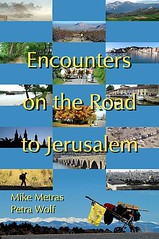 Wow! It has been over a year since we finished our two-year pilgrimage to Jerusalem when we walked into the Church of the Nativity in Bethlehem Christmas Day, 2010. In the year since we have traveled to India and retraced many our pilgrimage steps in the US from Lake Huron west. And after living five months in a casita (Santa Fe cottage) here in Santa Fe NM, we have moved to a more permanent place just south of town. And in October Petra became our newest US citizen.
Wow! It has been over a year since we finished our two-year pilgrimage to Jerusalem when we walked into the Church of the Nativity in Bethlehem Christmas Day, 2010. In the year since we have traveled to India and retraced many our pilgrimage steps in the US from Lake Huron west. And after living five months in a casita (Santa Fe cottage) here in Santa Fe NM, we have moved to a more permanent place just south of town. And in October Petra became our newest US citizen.
Now over a year after arriving in Jerusalem, we have released a book on our pilgrimage, Encounters on the Road to Jerusalem. The book tells the story of our encounters with people, places, animals, sun, wind, rain, snow, roads, and paths we walked across North America and southern Europe. It also tells the story of our encounters with our own joys, doubts, fears, and ecstasies. It is the story of living 23 months on the road, of trusting the Universe to provide what we needed when we needed it. You can browse and read the first 40 or so pages at www.PilgrimageCreations.com. You can also purchase it there.
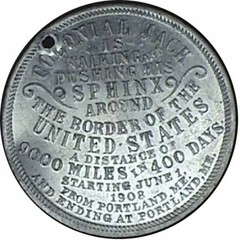 What a wonderful experience. Their travels remind me a bit of the 9,000-mile walk of John Albert Krohn, who walked all around the perimeter of the United States in 1908, distributing tokens along the way.
-Editor
What a wonderful experience. Their travels remind me a bit of the 9,000-mile walk of John Albert Krohn, who walked all around the perimeter of the United States in 1908, distributing tokens along the way.
-Editor
Ingrid Smith Has Passed
Joe Foster writes:
I have been informed by Warren Baker that Ingrid Smith of Toronto has passed away. She was involved in the coin business for years, in Germany and Canada most recently, running the TOREX shows in Toronto, in approx. 1980's and 1990's. Her son Brian took over the running of the shows a few years ago. Her daughter Christina was also in the coin business and might still be.
I was a regular attendant of the TOREX shows at the Ramada Inn/Primrose hotel at Carlton and Jarvis in downtown Toronto starting in the early 1980's when Jeffrey Hoare Auctions was doing the auctions. She is survived by her husband Dick, and son and daughter, as far as I know.....

THOUGHTS ON THE ANA MUSEUM THEFT
Regarding the recent disclosure of thefts from the American Numismatic Association museum, Jan Monroe writes:
The solution to insider theft is to hire people that don't need the money. I suspect that there are enough rich or retired rich folks who would love to work in the ANA or ANS because of their love of numismatics. Age is an advantage in hiring in this case.
Speaking of hiring, the association is looking for (yet another) Executive Director. In the "nobody ever listens to me, but..." department, I feel compelled to write (yet again) what I've written here in the past. Attempts to find some White Knight from outside the organization are misguided. HR consulting firms will naturally cite study after study recommending that someone with experience running a national nonprofit be brought in to lead the ANA. But running the ANA would only be a stepping stone for some career nonprofit manager. What is needed instead is a knowledgeable, hardworking and honest person who has the interests of the hobby and the organization at heart.
For such a person, leading the ANA would be the pinnacle of their career, a capstone of years of service to the hobby. With people from other backgrounds the job is at best a waystation and paycheck, and as we have seen, at its worst an opportunity for shysters to suck it dry. The most widely respected ANA leader in memory is Ed Rochette. His background for the job? Editorship of The Numismatist and solid love for the hobby and its people.
Let's hope a sensible decision is made this time around. For something tells me the other shoe hasn't dropped yet. This movie isn't over, and the ending won't be pretty. An honest, respected leader may be the organization's last best hope.
Coin World editor Beth Deisher discussed the theft and ANA's security procedures in the January 18th issue. Of interest to bibliophiles, she also brought up the topic of security for the ANA Library's rare book room. -Editor
"How does one person steal at least 338 rare and historic coins from a museum vault in 73 days? (That's an average of more than four per day, counting weekends and holidays.)
"The question has yet to be answered.
"After the ANA realized that a large number of coins may be missing from its museum collection, it finally (in 2010) allocated the staff time and resources to conduct a full inventory and cataloged the entire collection plus established a current market value for its holdings.
"According to ANA President Tom Hallenbeck, the ANA has also beefed up its museum and vault security, adding cameras. He also says the ANA is reviewing its access protocols.
"While such measures are steps in the right direction, the ANA needs to also devote the resources to digitally photograph all of its numismatic holdings and publish at least its most significant holdings online to increase public awareness. Also, ANA needs to immediately devote resources to conduct a similar inventory and appraisal for its numismatic library holdings as well as developing a written acquisition and deaccession policy for the library, which holds many rare books.
"ANA's numismatic collection and library holdings are valuable assets, which its leaders are entrusted to secure and protect. They should learn from this theft and view it as an expensive wake-up call."
To read the complete editorial, see: Coin theft an expensive security wake-up call for the ANA (www.coinworld.com/articles/coin-theft-an-expensive-security-wake-up-call/)
By the way, I've been informed that the link published last week for the list of stolen items is broken. Try this: Items stolen from the ANA Money Museum collection (www.money.org/ana_custom/StolenCoinsList.aspx).
On a related note, I wanted to mention some nice articles in the January 2012 issue of The Numismatist. John Kraljevich's column discusses his research into pistareens and sorting out the history of a bad translation from the French that had seeped into numismatic literature unchecked, and an article by Gene Hynds and Steve Ratliff on the short-tenured 24th Mint Director Fredrich von Engelken.
And back to the topic of theft from numismatic institutions, the 2011 Issue 4 of ANS magazine from the American Numismatic Society in New York features an article by Robert Hoge and Asylum editor David Yoon on a 1977 armed robbery where thieves made off with a trove of rarities including two 1737 Higley coppers and a 1792 pattern disme. Luckily, all the stolen items were later recovered. Hopefully the same may be said someday of the items taken from the ANA. -Editor
To read the earlier E-Sylum article, see: ANA MUSEUM LOOTED OF $1 MILLION IN RARE COINS (www.coinbooks.org/esylum_v15n03a05.html)
ROYAL MINT ON THE 1841 MAUNDY THREEPENCE
Philip Mernick writes:
Back in distant 2011, you featured the 1841 three pence coin found in Australia. I asked the Royal Mint at the time if they knew where the normal "Colonial" strikes went and they have only just replied! However the information may still be of interest. I was surprised how many overseas locations took them - the Spink Standard Catalogue merely says "for colonial use".
(1) Circulating threepences were produced bearing the date 1841, as well as Maundy pieces;
(2) The two types bear identical designs and thus can only be distinguished by the quality of the finish. If a Maundy coin were to enter circulation, it would soon lose its distinctive quality.
(3) Mint records suggest that about 440,000 circulating threepences and just under 3,000 Maundy threepences were struck in 1841.
(4) As for the colonial destinations, Mint records from the 1830s and 40s show that threepences were ordered and sent to such places as Jamaica, Bahamas, Barbados, Berbice, Grenada, Antigua, Demerara, Sierra Leone, Dominica, Mauritius, Malta, Gambia and St Helena. With respect to the 1841-dated pieces, there is reason to suppose that some if not all of them went to Mauritius.
It's great to know these records exist. Philip adds:
Google tells me Berbice was merged with Essequibo & Demerara to form British Guiana in 1831. I have to admit I hadn't heard of it !
To read the earlier E-Sylum articles, see:
QUERY: THE 1841 MAUNDY THREEPENCE
(www.coinbooks.org/esylum_v14n45a19.html)
MORE ON THE 1841 MAUNDY THREEPENCE
(www.coinbooks.org/esylum_v14n46a20.html)
FOLLOW-UP ON THE 1841 MAUNDY THREEPENCE
(www.coinbooks.org/esylum_v14n53a20.html)
NUMISMATIC ARTICLES IN THE JOURNAL OF MODERN HISTORY
Bruce W. Smith writes:
I found a couple interesting articles in the Journal of Modern History from 1933, and thought I would pass the information along to anyone who is interested. The most interesting article is: "The Dunkirk Money" by Clyde L. Grose. King Charles II, anxious to raise money after the British monarchy was restored, sold the city of Dunkirk to the French for 5 million livres. He insisted on being paid immediately and in silver coin.
This is a detailed account of how the money was gathered in French ecu coins and physically transported to England, where most of it was recoined over a period of years into British coin. I don't know whether this massive recoinage has been recorded in the numismatic literature of France or England, but it does coincide with the introduction of minting "machinery" in the London Mint from France. This 18 page article was published in the Journal of Modern History (University of Chicago Press), Volume 5 #1 in March 1933.
Some other articles in this volume include: "Spanish Treasure -- Casual Revenue of the Crown" by Cyrus H. Karraker (about British and other unauthorized attempts to recover Spanish coin from shipwrecks during the 1680's); also "How the French Deputies Were Paid in 1789-1791" by C. L. Benson; "The East India Directors in 1784" by Holden Furber; and "Studies of World War Propaganda 1914-1933" by Ralph Haswell Lutz.
I had this bound volume for sale on my book site, but it has already sold. I mainly sell on ABE Books (www.abebooks.com), but also have books listed on www.biblio.com and www.half.com. My seller name is Chinasmith.
GOZO KAWAMURA, COW MEDALLIST
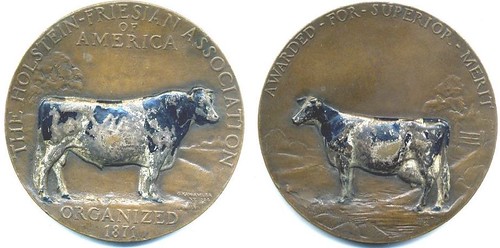
THE HOLSTEIN - FRIESIAN ASSOCIATION OF AMERICA SUPERIOR MERIT AWARD, (1929) 75.7mm. Bronze. Gozo Kawamura, Sc. (MACO) Extremely Fine. Obverse: THE HOLSTEIN-FRIESIAN ASSOCIATION/ OF/ AMERICA above cow facing right. In exergue: ORGANIZED/ 1871. Reverse: AWARDED - FOR - SUPERIOR - MERIT above barnyard scene of cow facing left.
The cows on both sides have been enameled in silver and black. According to MACO records, they first starting striking this medal in 1924 and did this special enameled version in 1929.
Gozo Kawamura (1886-1950), was a Japanese - American sculptor, whose entire medallic output was of cow medals! $335.00
Joe can be reached at JLevine968@aol.com . -Editor
SOME STACKS-BOWERS JANUARY 2012 AMERICANA SALE LOTS
Lot #6308. Mysterious Gold Medal Issued By Albert Wiss


40 millimeters. 80 grams. Obv: tables of numbers and letters with dates 1492, 1961 and 1942 around, as well as the inscription S. 40 - 80 G. at the top (referring to the size and weight of the medal). All rows, columns and diagonals add up to 16, as do the digits of the three years noted around the periphery. Rev: stars and numerals arranged in a pattern highly suggestive of the Sephirothic Tree of the later Kabbalists.
At the center, around a cross-like device, are the numbers 31 and 461538, both of which are significant to numerologists. Issued by Albert Wiss, whose name is inscribed in the lower obverse field above the date 1942. Bright, lustrous, yellow gold surfaces with no abrasions save for some wispy hairlines from handling. Accompanied by a small leather pouch for safe keeping.
Reportedly, medals of this type could be used to predict future events. Of numerology, Kabbalistic or perhaps even Masonic significance.
Lot #5055. Obsolete Notes. Long Branch, New Jersey. D. P. Peters-National Hotel.
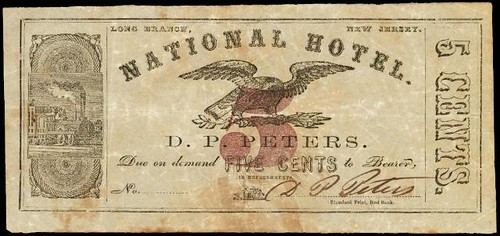
Unlisted issuer in Wait. Imprint of Standard Print, Red Bank. Red 5 in center. Eagle under title, across center issuer name. Left end train. A wow note from the O'Mara collection. Very desired shore location and the only note from this emitter we have seen. Full wide margined and the minor foxing should be ignored. A stellar note. The unlisted Congress Hall note from here in the first sale in November 2011 brought $1,092.50. This is worthy of getting to that number as well.
Lot #10431. Elgin, Illinois Pioneer Medal Plaque

175 millimeters. This plaster reproduction depicts the design of the Pioneer medal prepared by Trygve Rovelstad in conjunction with the 100th anniversary of the founding of Elgin, Illinois. The design is that of the Pioneer Memorial in Elgin, which design is also the focal point of the reverse of the 1936 Elgin, Illinois Centennial commemorative half dollar. The medal design, depicted here, has a different inscription along the upper border that reads 1835 PIONEERS 1935. Painted to simulate the original bronze medal plaque, with a hook for hanging affixed to the blank reverse.
ON CIRCULATING 'GOLD' COINS
Howard A. Daniel III writes:
The "Think Tank Recommends Melting 'Gold' Coins item reminded me of a search I did on eBay several months ago to find some modern Vietnamese NCLT (Non-Circulating Legal Tender) coins for a collector who had emailed me while I was in Viet Nam last year. The Singapore Mint produced some silver and gold NCLT coins for Viet Nam celebrating several lunar new years. During the last couple of years of minting them, they added a low value denomination made of Nordic Gold.
My eBay search found a seller offering one of those Vietnamese Nordic Gold coins at a little over the gold value for that coin's weight! I contacted the seller and told him that his coin contained no gold. His first response was quite angry but I replied with a request for him to go to the eBay Guide page; reviews.ebay.com/Nordic-Gold_W0QQugidZ10000000002362581 . His second reply was "Oops" and he repriced the coin.
Nordic Gold is 89% copper, 5% aluminum, 5% zinc, and 1% tin. The Swedish Mint developed it in 1991 for its 10 Kronor coin, and has since been used for many other coins of the world. It is the alloy used for the 10, 20 and 50 Cent Euro coins, so I am guessing the American recommending the melting of our gold coins will next recommend melting these Euro coins to get them out of their debt problems. We shall see.
To read the earlier E-Sylum article, see: THINK TANK RECOMMENDS MELTING 'GOLD' COINS (www.coinbooks.org/esylum_v15n03a17.html)
THE BOOK BAZARRE
ARTIST GARY TAXALI DESIGNS COINS FOR ROYAL CANADIAN MINT
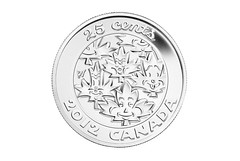 Internationally celebrated contemporary visual artist and award-winning illustrator, Gary Taxali, recently appointed to the Stamp Advisory Committee for Canada Post, has collaborated with the Royal Canadian Mint to create a series of six celebratory coins to feature in their 2012 gift sets, covering the themes of Birthday, Wedding, Tooth Fairy, New Baby, O Canada, and Holiday (which will be released later this year).
Internationally celebrated contemporary visual artist and award-winning illustrator, Gary Taxali, recently appointed to the Stamp Advisory Committee for Canada Post, has collaborated with the Royal Canadian Mint to create a series of six celebratory coins to feature in their 2012 gift sets, covering the themes of Birthday, Wedding, Tooth Fairy, New Baby, O Canada, and Holiday (which will be released later this year).
Taxali is known for his reinvention of pop art and iconography reminiscent of the 1930s with comparisons to pop culture masters like Keith Haring and Andy Warhol. Fine art, pop culture and 1930s style iconography and graphics are intertwined in the unique retro style of the coins.
The Taxali designed coins are a unique and marked departure from the Mint's usual coin designs with a more edgy, vintage yet contemporary style. Each coin is like a miniature collectible piece of Taxali art with the artist's initials engraved on the coin that will excite Taxali fans worldwide.
The coins feature Taxali's recognizable pop culture imagery infused with his retro graphic vintage style. The words "25 Cents", "2012" and "Canada" are depicted on the coins in Gary's famous font called "Chumply", the first time the Mint has allowed an artist to change the typography on coins.
"The Mint is pleased to work with Gary Taxali on this year's gift sets," says Patrick Hadsipantelis, Vice President of Marketing and Communications at the Royal Canadian Mint. "His renowned artistry brings a new and unique twist to these special keepsakes which celebrate some of life's great moments".
To read the complete article, see: Artist Gary Taxali collaborates with the Royal Mint (www.artdaily.org/index.asp?int_sec=2&int_new=53064)
ANOTHER POSSIBLE ROMAN BROTHEL TOKEN IDENTIFIED
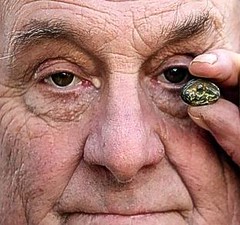 When amateur archaeologist Bob Dix unearthed what purported to be a Roman treasure, he thought it was pretty special - but he was not quite too sure why. Until now.
When amateur archaeologist Bob Dix unearthed what purported to be a Roman treasure, he thought it was pretty special - but he was not quite too sure why. Until now.
When his son gave him a metal detector for his birthday, he spent two days scouring his garden in Pylle.
Among several things he dug up was what seemed to be a risqué and raunchy Roman remnant. The pendant-style piece of jewelry clearly shows a man and woman engaged in an intimate sex act.
Mr Dix thought it was a bit strange but pretty special and tucked it away in a box for safe keeping.
To his surprise, he read about the story of a similar find in a national newspaper this month. Excited experts claim that the bronze Roman coin which recently washed up on the banks of the Thames is the first example of a Roman brothel token ever found in this country. Now Mr Dix, whose find has a similar design to the one found by a London pastry chef, has called in the experts too. And he maintains the discovery in his garden was actually the first.
Experts say the holder of the coin found in London would in Roman times have taken it to one of the many Londinium brothels and handed it to a sex slave in exchange for the act depicted on the coin. Retired Mr Dix, who now lives in Shepton Mallet, and used to run Community Care Mobility in Wells, hopes experts will find his token just as exciting - and valuable.
He said: "I believe the piece I found is slightly different to the one in London - I think it was what the prostitutes would have worn round their necks and people would recognise what service they were willing to provide."
Mr Dix says his former home in Pylle was off the Fosse Way, next to a former Roman settlement where builders unearthed many Roman artefacts years ago.
"I am eagerly waiting to hear what the experts say," he added.
To read the complete article, see:
Roman remnant reveals risqué routines of our ancient invaders
(www.thisissomerset.co.uk/Bob-calls-experts-check-brothel
-token/story-14975525-detail/story.html)
To read the earlier E-Sylum article, see: ROMAN BROTHEL TOKEN UNCOVERED IN LONDON (www.coinbooks.org/esylum_v15n02a17.html)
CASE AGAINST ROBERT HECHT ENDS IN ITALY
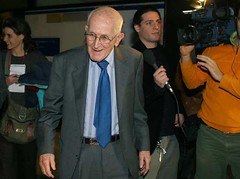 The trial of Robert E. Hecht Jr., the alleged mastermind of an international black market in ancient art, ended with no verdict this week when a three-judge panel in Rome found the time allotted for the trial had expired.
The trial of Robert E. Hecht Jr., the alleged mastermind of an international black market in ancient art, ended with no verdict this week when a three-judge panel in Rome found the time allotted for the trial had expired.
Hecht, a 92-year-old Baltimore native now confined to bed at his home in Paris, has cut a wide swath through the art world since the 1950s, supplying museums and collectors around the world with some of the finest examples of ancient Greek, Roman and Etruscan art.
"I have no idea of where an object was excavated," he said in a phone interview on Thursday. "It could have been excavated 100 years ago, it could have been excavated an hour ago."
Throughout that colorful career, Hecht has been dogged by allegations that his wares had been recently looted from archaeological sites and smuggled out of their homeland. It was a claim he never directly denied while maintaining his innocence of the Italian charges, which focused on an alleged conspiracy among dealers he considers rivals.
The ruling brings an ambiguous end to a sweeping investigation that traced relics looted from tombs in Italy through a network of smugglers, dealers and private collectors before appearing on display at museums in the United States, Europe and beyond.
The criminal case stemming from that investigation has dragged through Italian courts since 2005 and focused on Hecht and two co-defendants: Marion True, the former Getty antiquities curator, and Italian dealer Giacomo Medici.
To read the complete article, see:
Italian case against antiquities dealer ends
(latimesblogs.latimes.com/culturemonster/2012/01
/italian-antiquities-robert-hecht-case-ends.html)
To read an earlier E-Sylum article, see: QUIZ ANSWER: ROBERT HECHT AND THE MEDICI CONSPIRACY (www.coinbooks.org/esylum_v10n49a15.html)
COULD FACEBOOK CREDITS EVOLVE INTO A TRUE CURRENCY?
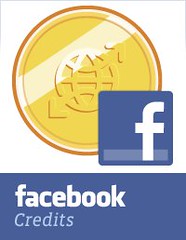 Although Facebook Credits is still primarily an in-game currency, in 2011 we began to see a glimmer of what Credits will look like when it grows up.
Although Facebook Credits is still primarily an in-game currency, in 2011 we began to see a glimmer of what Credits will look like when it grows up.
Movie studios like Miramax, Warner Bros. and Paramount Pictures, not to mention BBC Worldwide began offerings movies and TV shows for rent on Facebook. As an example, in promotion of "Mission: Impossible, Ghost Protocol," the series' first three movies were made available for rent on Facebook for 30 Credits per rental. In addition, to promote the launch of "Tower Heist," Universal Pictures gave away 1 million Facebook Credits ($100,000 value) in an online scavenger hunt. DJ David Guetta began selling MP3s on his Facebook Page (19 Credits per track) and U.K.'s "Big Brother" and "The X Factor" began allowing fans to vote for contestants using Facebook Credits.
These examples, however, were few and far between in 2011 and it's fair to say that even most Facebook users don't know what Credits are for. 2012 is the year this will change.
Facebook has proven that the Credits model can work in social gaming, which represents between 25-30 percent of Facebook users, and will now utilize the same model to first enter the business of music, movies, TV and any other shareable media, before entering larger industries like financial services and health care in the coming years.
While still relatively unknown, Facebook Credits will emerge and begin to mean very real cash to a quickly expanding group of first-mover entrepreneurs and innovators who are just starting to get a whiff of the opportunities presented by the Facebook Credits economy.
It's for real and it's here.
Similar to Moore's Law, which famously predicted that the number of transistors than could be placed inexpensively on an integrated circuit doubles every two years and Mark Zuckerberg's Law that (scarily to some) states that people will be willing to "share" twice as much each year, I believe the Facebook Credits economy will double every year for the next five years.
This is based on the staggering amount of new ways that people will be earning and spending Facebook Credits over the coming years and the international growth, which will follow innovation in the U.S. This is conservative based on reports we've already seen that global revenue from Facebook Credits more than tripled in size from 2010, $140 Million, to $470 million in 2011. By 2016, Facebook Credits could be a $15 billion business.
To read the complete article, see:
Predictions for Facebook Credits in 2012
(www.insidefacebook.com/2012/01/18/predictions
-for-facebook-credits-in-2012/)
FEATURED WEB PAGE: METACOIN
This week's Featured Web Page is Metacoin.com, maintained by Tim L. Shuck of Ames, IA. He writes:I post links and/or excerpts to many numismatic and bullion stories each day (time permitting), gathered from a wide variety of sources; also on Twitter with brief summary links.

www.metacoin.com
